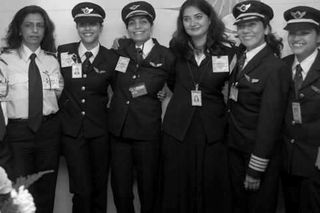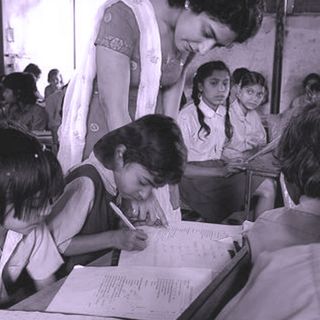
India Has A Greater Percentage of Female Pilots Than Anywhere Else in the World
Good news on women’s labor force participation, for a change.

India tops the world in terms of the percentage of women represented in its commercial pilot labor force, reports Reuters today. That percentage is twice as high as the proportion of women among commercial pilots in the US or Australia; globally, the average percent of commercial pilots who are women stands at merely 5%.
It’s a small pocket of leadership in a country known for being far behind the global average when it comes gender diversity and inclusion in the workplace. But it is not the only such pocket. In the Indian IT industry, 30% of programmers are women, compared to 21% of programmers in the US. India is also known for it’s high percentage of female participation and leadership within the financial services sector: Per a 2014 report, women-led banks controlled roughly 40% of the country’s assets.
“There isn’t another banking system in the world that comes close,” Usha Thorat, a former deputy governor at the Reserve Bank of India, told Financial Times at the time.
That women’s inroads into universally male bastions like flight, computing and banking might be greater in India, than in more gender-egalitarian economically developed societies, is surprising, but not unheard of. It’s a phenomenon known as the ‘gender equality paradox.’ In developing economies, fewer routes to surefire economic advancement and security corral women toward a handful of high-paying industries. In more advanced economies, women have more options for earning, and so female labor force participation is spread across more fields. This is particularly apparent in fields relating to science, technology, engineering and maths (STEM).
“STEM careers are generally secure and well-paid but the risks of not following such a path can vary,” explains David Geary, PhD, a professor at the University of Missouri in the US who has studied women’s participation in the STEM labor force around the world. “In more affluent countries where any choice of career feels relatively safe, women may feel able to make choices based on non-economic factors. Conversely, in countries with fewer economic opportunities, or where employment might be precarious, a well-paid and relatively secure STEM career can be more attractive to women.”
“Essentially when you lessen economic concerns, as is the case in gender-equal countries, personal preferences are more strongly expressed,” he continues.
It gives India a unique window to grow female representation in typically male-dominated industries, setting a standard for gender diversity even as other fields of opportunity and economic security start springing up. Because while it’s nice to be a global leader in gender (especially when the focus is usually on India’s deeply unequal gender problems) it’s worth remembering that these percentages are still dismal. 12% female representation among commercial pilots might be the best in the world, but it’s a far cry from 50-50.
It’s also worth noting that representation does not necessarily engender equality. While India’s female pilots enjoy union-mandated equal pay, women in most other industries are not as lucky. And then there’s the question of the glass ceiling; if women are only making gains toward equal representation at junior levels of the labor force, there’s still a long way to go toward true equality for women in the workforce.
Liesl Goecker is The Swaddle's managing editor.
Related


When a Bishop Can Grope Ariana Grande on Live TV, What Does It Mean for the Rest of Us?
